In this article, we will be discussing how identifying plant groups in containers can help define your garden. In my various articles, you will know that I talk about the various plants that can be grown in containers, but I have not talked much about what defines each group.
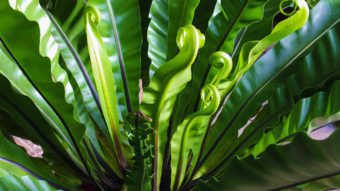
This is because each group has a different role in the garden and this article will discuss this role.
Plants fall into 7 categories that are defined by their length of the life cycle, the size it grows to, its shape and its growing habits, as well as their physical structure. This article explains how plants are grouped and how they will behave in your container garden.
ANNUALS AND BIENNIALS
Plants that germinate, form stems and leaves, flowers and then set seeds and die in one year are known as annuals. These are an ideal group of plants for short-lived spring and summer displays. The plants are further divided into hardy annuals that can withstand frosts and tender types that can only go out into the garden when the frosts have passed.
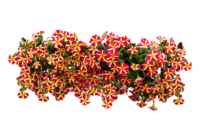
Most annuals are bedding plants and can be sown from seed from shop-bought species or saved seed stock, or they can be bought as young plants. What surprises people is that some bedding plant often seen in gardens are actually tender perennials, but they are often treated as annuals as they would not survive the cold weather.
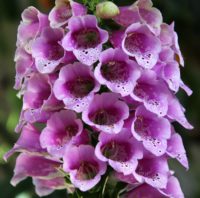
A biennial plant lives for two growing seasons; germinating in year one, whilst forming stems and leaves. After overwintering the plant flowers, setting seed and dying in the second. This includes plants like forget-me-nots and foxgloves.
PERENNIALS
This group of plants lives for more than two years and often for many years. They emerge from underground roots in spring, produce stems and leaves, then flower and set seed, before dying back into the ground in autumn.
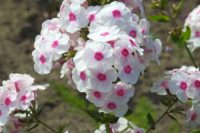
Most perennials become dormant in winter, although some perennials are evergreen and retain their colour and leaves all year round. Some die back to a woody base rather than roots but they are still perennials.
Some perennials are tender and only come back to life in spring if you have protected them during winter or by bringing then undercover inside a greenhouse or conservatory. These tender perennials are often treated as annual for short- term colourful blooms and forms.
This group is divided into 5 categories:
- The true perennials that emerge and die back to their base each and every year.

Ferns are great perennials
- Evergreen perennials that give colourful leaves all year round and often flowers at a certain time of the year.
- Woody perennial that retail a woody framework during winter and do not emerge from roots underground.
- Ferns that are grown for the leaves and many of them retain their leaves in winter as they are an evergreen perennial.
- Grasses are a large group of perennials that either emerges from a base or that are evergreen.
When I say that perennials are long-lived this is not true for some of them, as they can die after a few years. Plants like sea holly often die within 5 years of active growth, so they are exceptions.
MARGINALS AND WATER PLANTS
Plants that thrive in water fall into two categories: Marginals and aquatic plants. Marginals tend to grow in shallow water usually up to 15cm deep. Aquatic plant includes water lilies and generally grow at depths between 30cm and 1.9m deep.
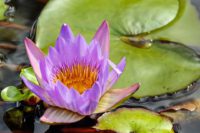
Ideally in natural ponds will include a range of marginal and deep water aquatic plants to create a balanced ecosystem, as well as use a few ‘Oxygenators’. These are fast-growing, submerged plants that release oxygen in the pond. These complete for nutrients with pond weeds and algae and therefore keep the water clear. Examples include Hornwort (Ceratophyllum demersum) and Ranunculus aquatilis, which are non-invasive oxygenators.
Aquatics grow floating on the surface of the water, whilst their roots are underwater. Marginals are plants by the pond-side and enjoy growing in boggy conditions-they can be said to be bog plants.
BULBS
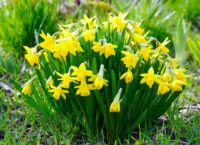
This group include all plants that form solid growth structures, such as corms, rhizomes, tubers and true bulbs. These are one of the mainstays of the container garden in spring and summer, where you often see their colourful bloom everywhere. If you what to know the difference between the 4 types then it is best to consult my glossary of gardening terms.
This group includes tulips, daffodils, hyacinths, irises, gladioli and many others. If you want to know what bulbs can be grown in containers then I suggest you read my articles on this (Bulbs that can be grown in containers, part I and Bulbs that can be grown in containers, part II
SHRUBS
These are woody-stemmed plants that produce a permanent framework of branches that rise from the ground or a central trunk to create a bushy form.
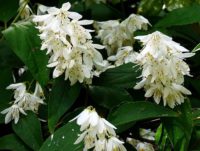
The shrubs can be deciduous or evergreen and they are the main features of most gardens. There is a further category of subshrub which can be seen as a plant that divides between being a perennial and being a shrub; it has both characteristics.
Shrubs include ground huggers such as heathers to tree-like Mock oranges and tall bamboos. They provide interest for all 4 seasons from their structure, textured leaves, decorative flowers and fruits, and often colourful leaves in autumn. Shrubs can be made into features by pruning and training evergreens such as box in what is known as topiary.
TREES
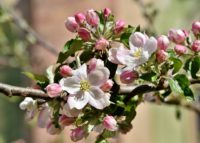
Trees are not often seen in the container garden but they can be used. These provide the main architecture inside the garden. They are grown for their flowers, bark and foliage, often colourful in autumn. The trees can be either deciduous or evergreen, where they can form a spreading, rounded, conical, weeping or columnar canopy of leafy branches from a central trunk. This leads to trees of all different sizes, shapes and heights.
CLIMBERS
This is a group of woody-stemmed perennials that are used to climb over structures or through other plants. They climb by different means; twining climbers such as clematis use leaf stalks, tendrils or stems to coil around supports. Others like roses use thorny stems to act as hooks to grip on to trellises.
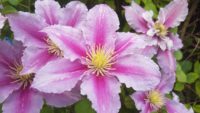
Self-clinging climbers such as Parthenocistus and ivy attach themselves to support using adhesive pads or by aerial roots. Climbers can be either evergreen or deciduous, fast or slow-growing, so you do have a choice. They may die back each year or they may be shrubby climber developing a more substantial and permanent presence in the garden.
Woody climbers require sturdy support to hold their stems or they die back each year, which is suited for smaller plots.
CONCLUSIONS
In this article, we have discussed what identifying plant groups that can be used in the garden. You now understand that there are 7 groups often used in the garden from annuals, biennials, perennials, water plants, marginal, bulbs, shrubs, trees and climbers.
It is up to you to what to have in your container garden, but if you want a balanced garden, it is suggested that you have one from each group. If you do not have a pond then obviously marginal and water plants can be overlooked. The more varieties that you use, the more interest you will generate for all 4 seasons, as you can differing colours, forms, structure and points of interest.
If you have any questions that you wish to make, please do so in the comment box below.
Grow the right plant group to make an instant impact.

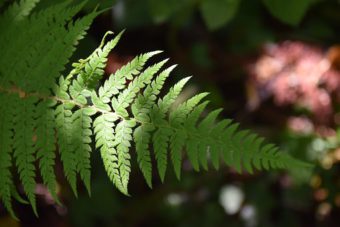
I loved reading this post just for the fact that I now think I can say what is an annual and what is a perennial. LOL I just purchased a house, and the soil is really not good for growing anything except cacti type plants and palms. So I am looking at doing a container garden in the back of my house. You’ve given me some ideas. And now I know where to start!
Hi Leah
It is a great feeling when someone appreciates what you have done, I hope you take a lot of tips from my website and apply it to your container garden.
Kind Regards
Antonio
Rather an interesting approach into the study of gardening and knowing exactly what is what and what to really categorise and how to ensure that we don’t give wrong treatments to each plant categorisation. Thank you for sharing your knowledge here and it will definitely help a lot. Though I am not into container gardening yet.
Hi Abel
Thank you once again for stopping by and commenting, as it is very much appreciated. I try to be as helpful as possible to guide people in what plants are suitable and not suitable for their needs.
If you know what categories can b reused, you will get a better, balanced and colourful design.
Try container gardening today.
Antonio
Hmm, I have never considered all these plant groups in various containers in my garden. It might be nice to include a few. I have bulbs growing around a bay tree in a tub, for example and groupings of annuals, bulbs and perennials can look lovely. But you would have to be careful about different requirements. For example ferns might not be able to cope with the sun that other plants can. Also some plants are frost tender. There are a few plants that fall outside of your main categories but for the general gardener it is a helpful list 🙂
Hi Deb
The aim of this article is to demonstrate how the various identified groups can be used to give colour and interest throughout the year. You tend to find a balanced container garden has some plants of each group and so have a more appealing nature. There are a lot of plants in each group and it is here to give people an idea of what can be grown.
Kind Regards
Antonio
Thanks Antonio for the great gardening tips! Now that I have a better understanding of the different plant groups, I am so looking forward to starting my own garden. I know this may sound like a silly question, but are these plants ok to be inside?Thanks again for the tips Antonio and I hope to hear from you soon.
Hi CeCemorgan
Thank you for those kind words and the answer to your question is no but I have written a lot of articles on houseplants. You can peruse this to find more information on what plants can be grown.
Thanks
Antonio